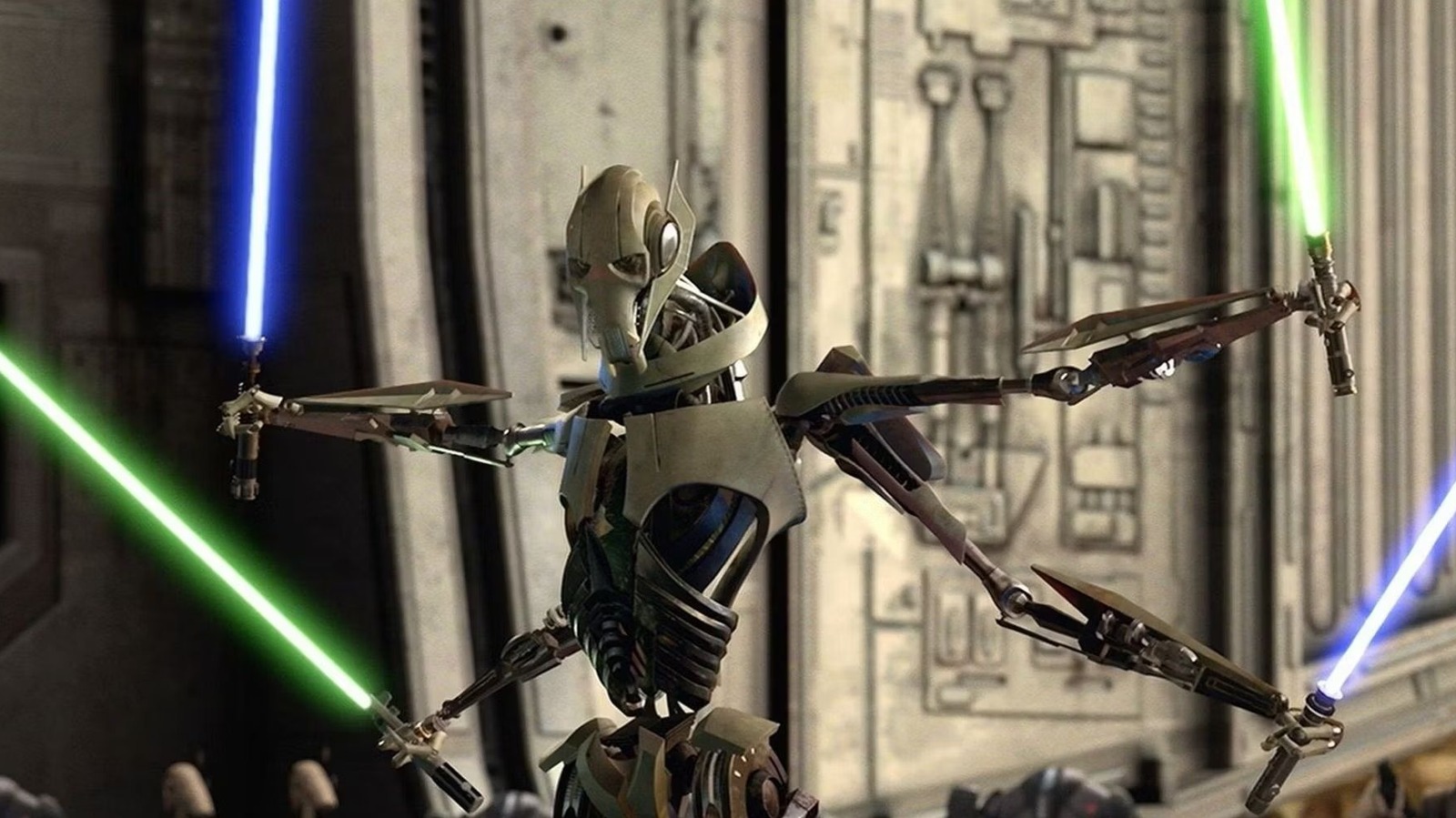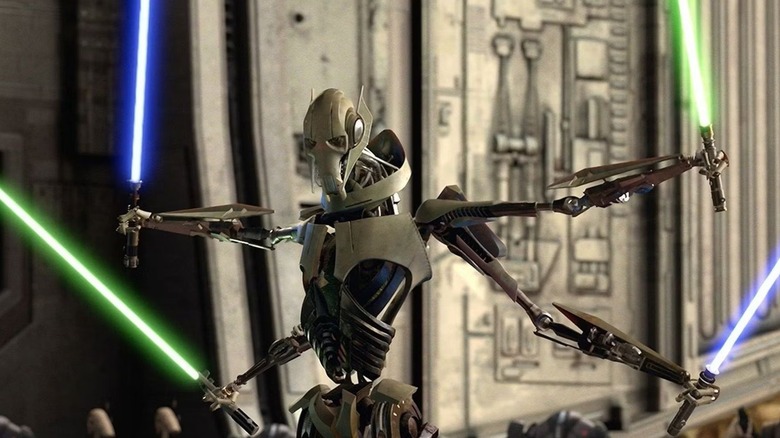Star Wars is full of fascinating, enigmatic villainsmost of them get barely any dialogue, let alone have their background or story explained - at least in the movies. Whether it's Darth Vader presented as just a tall, menacing man in dark, robotic armor or Boba Fett's silent, striking armor, these antagonists work because of how little we know about them and how memorable their designs are.
This is especially true in the prequel trilogy, where we get characters like Darth Maul, who is just evil incarnate, perfect design. While perhaps not as well-liked, General Grievous' character design is just as effective. He is an instantly memorable and striking villain, his cybernetic exterior and biological organs making him quite mysterious and alluring.
Grievous, like most things Star Wars, went through many changes before making his debut, with George Lucas even briefly considered making the character Darth Maul in disguise. The general was first introduced in Genndy Tartakovsky's 2003 animated micro-series The Clone Wars, voiced by John DiMaggio and Richard McGonagall, before making his big screen debut in Star Wars: Episode III - Revenge of the Sith." " In that film, Grievous was voiced by sound editor and voice actor Matthew Wood, who would go on to reprise the role in The Clone Wars cartoon series (where he also voices the battle droids and many others).
But before Wood became the voice of Grievous, the asthmatic cybernetic villain was almost portrayed in Revenge of the Sith by none other than Oscar winner Gary Oldman. Once, while appearing on "Happy Sad Confused" podcast, Oldman said he even recorded some lines for the character, directed by Lucas himself. So what went wrong? According to Oldman, "What happened had to do with union stuff and non-union stuff," adding that he didn't want to be "the poster boy for breaking union rules."
George Lucas' history with unions and guilds is complicated
The reason Oldman couldn't voice Grievous in Revenge of the Sith had to do with the film being a non-SAG shoot that took place in England and Australia - like all the Star Wars films. There is a regulation within the Screen Actors Guild, known as Global Rule One, which ensures that members retain their full union protection even if they work overseas. Although Lucasfilm requested special permission for Oldman to participate in a non-syndicate production, the actor ultimately had to pass on the film.
This is far from the first time George Lucas has had trouble with unions and guilds, with which the director has a long, unpleasant and complicated history. It started after the release of Star Wars: Episode V - The Empire Strikes Back in 1980. when Lucas very publicly left the Directors Guild of America following a dispute regarding the use of a screen director credit. Although Lucas has received awards from the Producers Guild (of which he is presumably still a member), he is also not technically a member of the WGA. Instead, the retired filmmaker is a "five-core member," meaning he has resigned his full membership in the writers' union and instead pays his union contract dues and benefits, but otherwise doesn't have to follow any union rules. , including union strikes.
In 1981, Lucas even became the first person to become an A Fi-core member of the WGA - although other notable filmmakers such as Francis Ford Coppola, Bob Gale, Robert Rodriguez and Steven Soderbergh soon appeared on the list.
Source link


